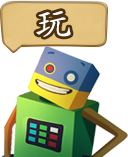
Did you know that we use computational thinking daily? Just take a look around your life and you will see that life is a set of issues and questions. How can you cook something if you are hungry? How can your kids go to school? How can you improve yourself at the gym? How can you buy a new car with a limited amount of money? Most of our daily activities are implemented step by step and according to the priority. This is done by using logical analysis, decomposition, abstraction, pattern recognition, and algorithms, all of which are the main concepts of a computational thinking approach.
Computational thinking is an effective learning method that is used to solve complicated problems in a smart way. Those problems could be related to computer science or to everyday life. This method can be applied by humans, smart machines, or both.
This may be the first time you’ve heard about computational thinking, but if you think about how you deal with your daily issues you will probably find that you follow the four main concepts of a computational thinking approach by default.
Let’s discuss methods of applying computational thinking concepts if you want to teach your kids a new language.
Computational thinking provides a set of strategies for problem-solving. The first is dividing any complex and large problem into small pieces that can each be solved separately. When teaching your kids a new language, you should analyze each sentence linguistically to determine whether it is declarative, imperative, interrogative, exclamatory, a verb phrase, or a noun phrase. Then, you should determine and represent patterns for different types of sentences. You could draw a chart after dividing the language concepts into those parts. Be sure to start with the simplest part.
We should explore similarities in the pieces of complex problems to minimize the time it takes to solve the overall problem. Similarities in the different parts of a problem can help to creating rules that can be used to create a solution. If you find a way to solve one part, the same solution may be a big piece of solving the entire problem. Surely, you have trained your kids to use a grammar corrector and spellcheck applications while teaching them a new language. By doing this, you have used pattern recognition concepts.
Simplifying a problem and identifying important parts of each issue without needing to know extra details is the smartest concept of computational thinking. Thus, while learning any new language you may use adverbs, adjectives, and metaphors to express a complicated sentence without going into detail.
A computational thinking approach depends on using an algorithm design, which is a series of instructions and rules that dictate how to perform a specific task. The series should be reusable, at which point it is computational thinking! As we learn a new language, we mostly document the basics and write essential notes to make the learning process easier and faster. We can then use these instructions to help as we learn another language.
Machines can't replace humans, and smart machines are not alone in their ability to use computational thinking. Human brains also use traditional computational thinking. You should promote these skills to become better than a smart machine. Just register for free and follow the RoboGarden computational thinking approach to help you and your kids learn to solve any problem in any field easily.
